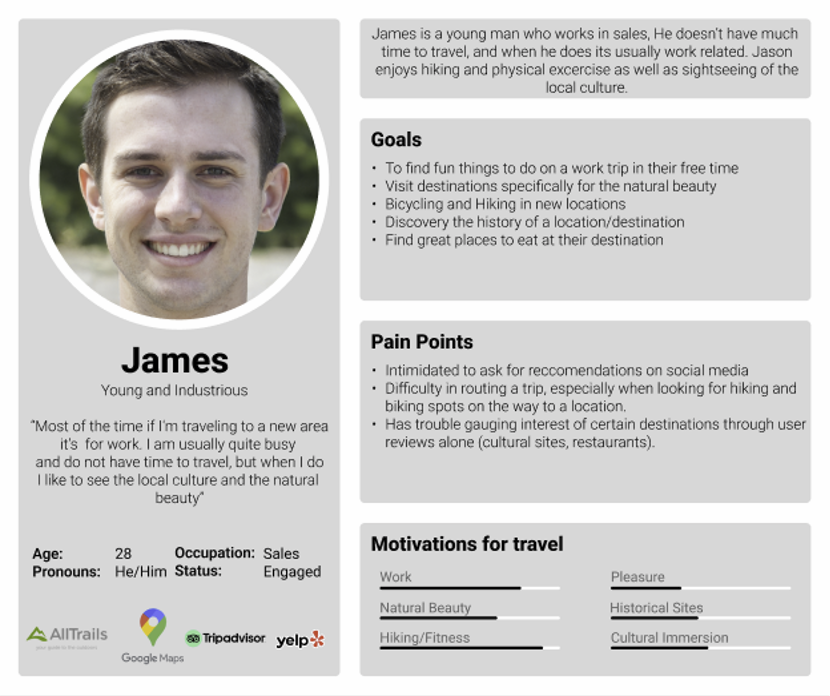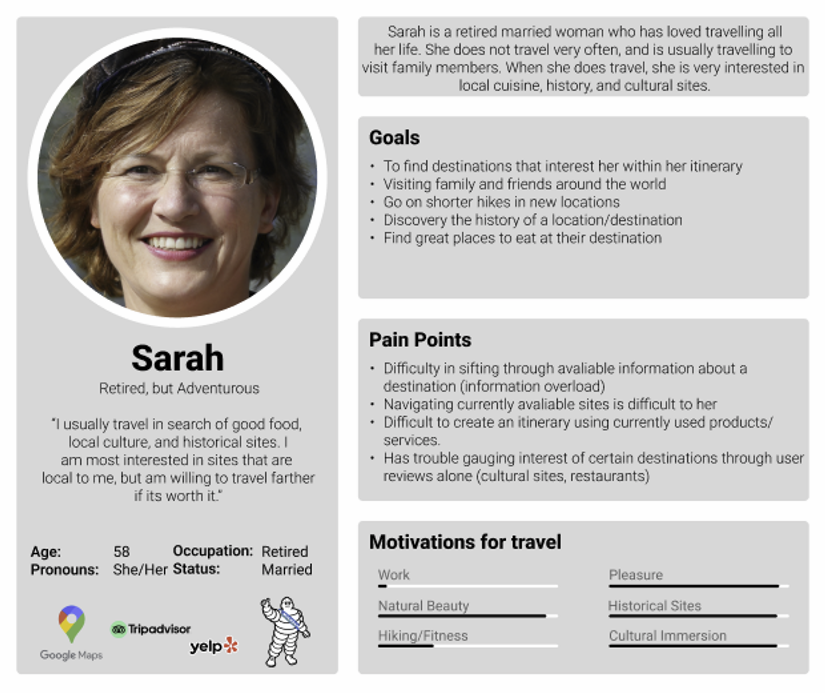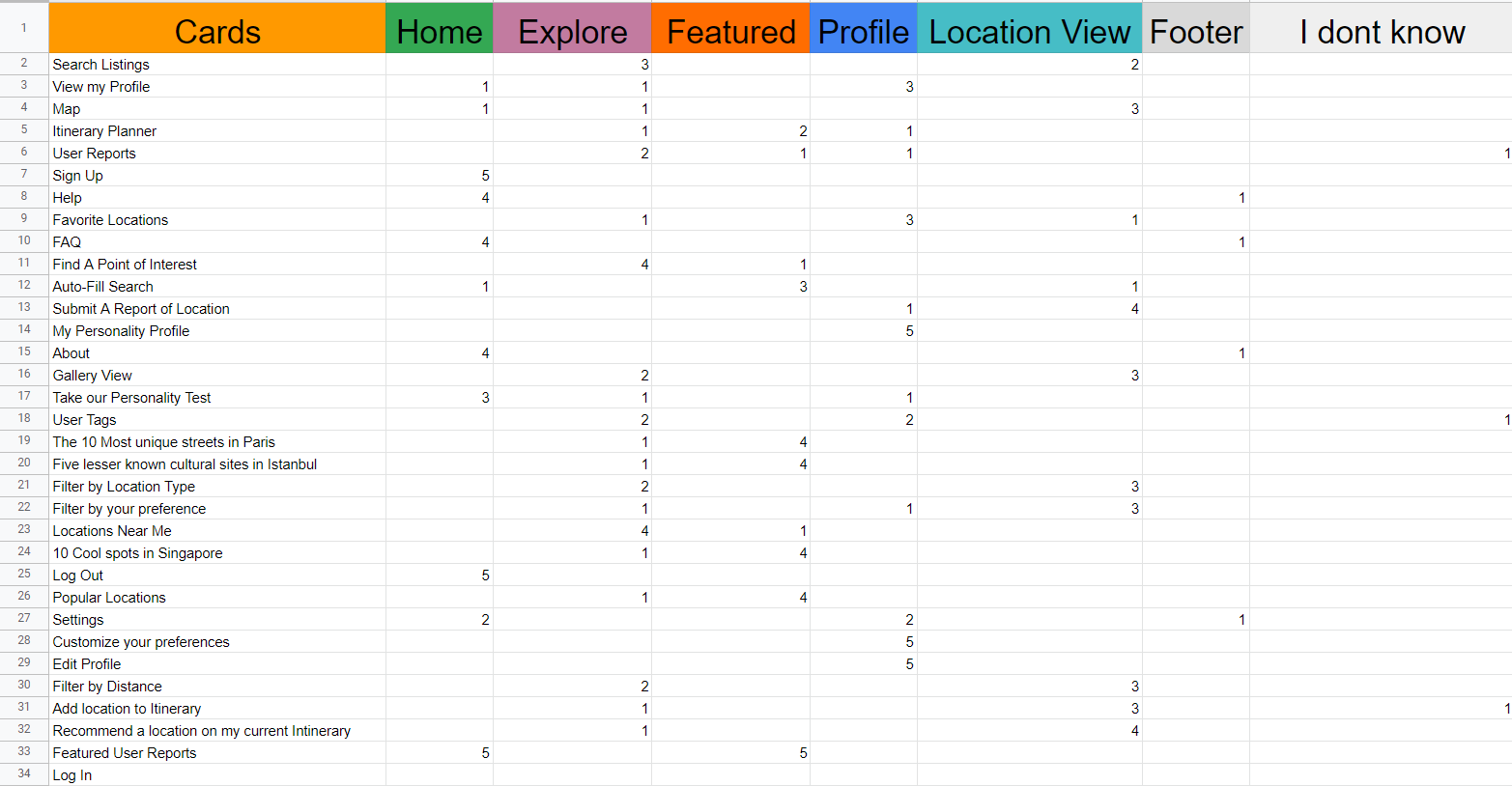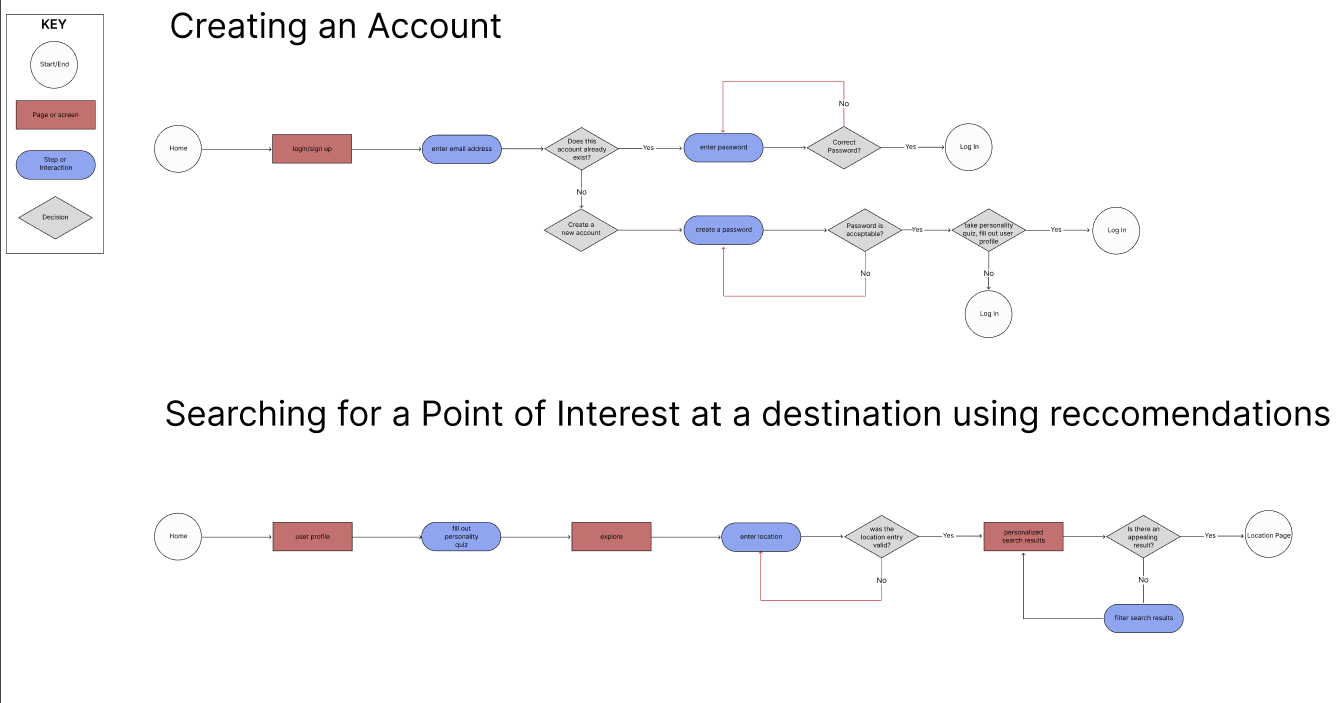ReVenture
Overview
Problem Statement: Travelers have trouble finding unique points of interest to visit at their destinations. It is difficult to look through currently available travel sites and find lesser known points of interest that might appeal to you, the traveler.
Currently available travel sites often have user reviews with each destination displaying an average user rating. This average rating often does not reflect individual traveler’s interests and motivations.
Solution: A product that figures out the interests and motivations of travelers and then shows them curated points of interest that would appeal to them.
User Interviews
We conducted user interview with 5 individuals with these goals:
Understand users motivations in regards to visiting points of interest while traveling
Understand users current methods in finding new points of interest to visit.
These were the results of these initial interviews:
Shared Pain Points
Difficulty in assessing interest in a location based on user reviews for more biased categories of locations.
Difficulty in seeing good images of a place before visiting
Shared Motivations
Wants to experience local culture
Wants to visit novel locations
Wants to avoid touristy spots
User Personas
We then created two personas based our interviewees as examples of potential users.
POV Statements
These POV statements helped us come with solutions for the problems of our user personas and our potential users that we interviewed.
I would like to explore ways to help travelers find destinations that cater to their interests, because it can be difficult for users to sift through the available information and find what they are looking for.
I would like to explore ways to help travelers route a trip, because travelers have difficulty in routing an itinerary using the services they currently use.
I thought that travelers would not be very interested in personal commentaries and stories about visiting cultural and/or historical sites, but after talking to travelers I learned that some travelers do find these types of information useful. Therefore I would like to help travelers find thought-provoking stories that are pertinent to destinations that they are interested in.
Wireframing Overview
The following methods were used to help develop our concept before creating wireframes:
Card Sorting
Helped us develop the user and task flows.
Sitemap
Helped us plan the information architecture for the product.
User and Task Flows
Helped us conceive of the steps needed for users to accomplish tasks within the product.
Mood Board, Logo and Style Guide
Helped us create the style and brand of this product.
Core Values: Discovery, Authenticity, Exploration, Heritage, Connection, Adventure
Low-Fi and Mid-Fi Wireframes
High Fidelity Wireframes
and Usability Testing
These wireframes were used to conduct usability testing and were then further iterated on.
Tasks Completed in testing:
1. Create an account and fill out the personality survey
2. Search for a destination, enable personalized recommendation filtering, and reach a destination page from the results.
Final Wireframes
After usability testing, the following iterations were made:
Topic Highlighting has been made clearer, and topic text is more readable via increased contrast with background. This addresses two usability issues (ability to read topic text, ability to understand when a topic has been selected).
Search and Cancel buttons added to the filter page to address usability issues in leaving the filter page.
The following would be some potential next steps for this project if I had the time:
Determine if the revised wireframes solved the issues found during usability testing.
Iterate as needed based on this.
Handoff the design to the developer using Figma as the spec tool.









